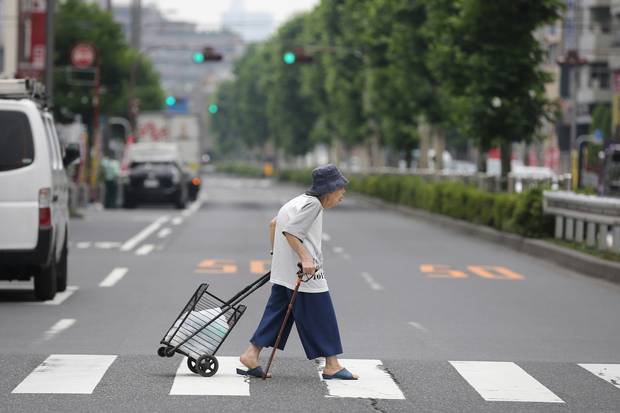
A reflection on: The critical concepts of ageing
by Patrick Capitelli-Mcmahon
Whilst perfectly natural and a fundamental element of life, ageing and the effects it has on our lives have presented society with many challenges. Using articles from sociologists such as Phillipson and Timonen, I will firstly explore the social construction of ageing and the effects it has had on governments and society in the last sixty years in the developed world. After analysing these effects, I will discuss how and why the modern world is faced with an ageing population and what we can expect in the future.
In his writing, Phillipson (2013) analyses the social construction of ageing by firstly discussing the welfare state. Following the Second World War, societal reconstruction was in order and the welfare state introduced under Atlee’s Labour government was part of a huge societal reconstruction desperately needed in Britain. The welfare state attempted to reorganise life into ‘boxes’ of education, work and retirement, to reach a ‘higher ethical ground’ and a deeper sense of community care. Flat-rate pensions were introduced in 1948 as care for the elderly was seen as a fair exchange for past services and resolving the suffering of, for what was for many, a physically uncomfortable stage of later life.
Retirement was widely implemented in the 1950/60s at the age of 60 and 65 for women and men respectively. Although 25% of men aged over 65 were still in work in 1961, this figure had shrunk to 10% in 1981. However, Kohli and Guillemard (1991) argue that this early withdrawal from work ‘de-stabilised the life course’ within society. Debates in the 1980s under Thatcher and the 1990s began to emerge over the importance of elderly work and the unaffordability of early retirement. Retirement ages were raised and age-discrimination laws were introduced to encourage the elderly to work for longer. However, when the 2008 economic crash hit the UK, a drop in share prices meant a drop in pension pot value from £552bn, nationally to £391bn in the seventeen months after October 2007.
Over half a century, the elderly population had gone from being protected by the welfare state to being part of a much larger ‘risk society’ (Beck, 1992). The individualisation of society meant other factors for older people, including their support networks (i.e. family care), wealth and health would determine their standard of living. Safety nets were removed in a time of governmental austerity and the later stages of life became much harsher for some.
It is also vital to explore not only how our ageing population is being handled or received, but how and why it occurred in the first place. Although a child born in most places today is expected to outlive their parents, the pace of population ageing varies across the world. Whilst Western Europe has already undergone an ageing of its population, the US, Canada and Australia have a faster rate of ageing. On the other hand, a slow ageing of youth can be seen in semi-developed countries, such as China.
Timonen (2008) states lower mortality rates coupled with longer life expectancy is a fundamental reason for our global ageing population. Oeppen and Vaupel (2002) also claim the life-expectancy in the longest living countries has increased by 2.5 years per decade since 1840 and there are many reasons for this. Better health in the womb (nutrition, awareness, pressure not to drink, smoke, etc.), an increase in early childhood healthcare, better healthcare in general (including technological advances), and increased education on how to stay alive for longer are all fully statistically supported explanations. The life expectancy across the world, according to the United Nations, increased from 46.6 years to 66.5 from 1950/55 to 2005/10.
Lower fertility has played a major role in ageing our global population, as a shift from high to low birth and death rates has contributed greatly. Table 2.1 masks the diversity by country but is evidence for the shocking dip in fertility in recent years. Lower fertility plus lower mortality equals an ageing population according to Timonen, as he notes that the population structures in many countries have changed from ‘pyramids to pillars’ (as Figure 2.2 illustrates). The lowest sections of the pillar are narrower than the middle section, reflecting a strong decline in birth rates.
Therefore, whilst attitudes towards the elderly have changed considerably in the last sixty years, the evidence for an ageing population is irrefutable and only time can tell how society will deal with the more sincere problems this will cause us to face in future years.
References
- Beck, Ulrich (1992) Risk Society: Toward a New Modernity. SAGE Publications.
- Kohli, Guillemard (1991)Time for Retirement: Comparative Studies of Early Exit from the Labour Force. Cambridge University Press,.
- Oeppen, Jim, Vaupel, James (2002) ‘Broken Limits to Life Expectancy’, Science 296, 1029-1031.
- Phillipson, Christopher (2013) Ageing: Polity Key Concepts in the Social Sciences series London: Wiley
- Timonen, Virpi (2008) ‘Demography 101: Why Do Populations Age?’in Ageing societies: a comparative introduction, 13-27.

0 Comments